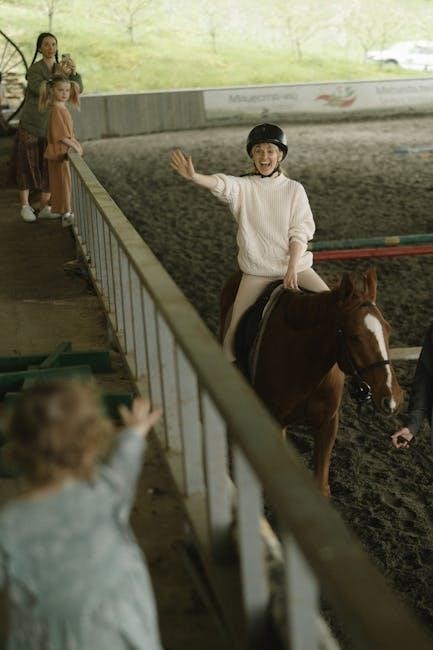
riding arena size guide
The introduction to riding arena size guide provides essential information for equestrians to determine ideal arena dimensions and construction requirements effectively always online now․
Purpose of the Guide
The purpose of the riding arena size guide is to assist equestrians in designing and building suitable arenas for their needs‚ providing a comprehensive overview of the process․ This guide aims to educate readers on the various factors to consider when determining the ideal arena size‚ including the intended use and discipline․ By understanding the purpose of the guide‚ readers can make informed decisions and create a safe and functional riding space․ The guide is packed with information‚ including standard arena sizes‚ construction essentials‚ and expert advice‚ making it an invaluable resource for anyone looking to build a riding arena‚ with the goal of creating a perfect riding space․ The guide is designed to be user-friendly and easy to follow‚ allowing readers to navigate the process with ease and confidence․
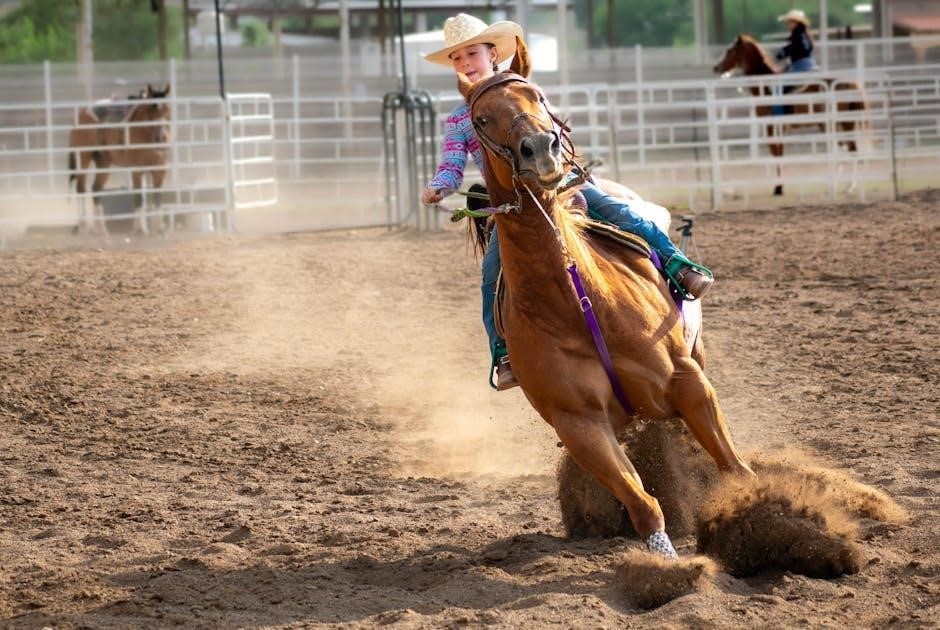
Standard Arena Sizes
Standard arena sizes vary depending on discipline‚ with common sizes being 20 x 40 meters and 20 x 60 meters always used online now effectively․
Dimensions for Different Disciplines
Dimensions for different disciplines vary‚ with dressage arenas typically being 20 x 60 meters‚ while jumping and eventing arenas may be larger‚ around 25 x 80 meters or more‚ depending on the specific requirements of the discipline‚ and the level of competition‚ with smaller arenas suitable for training and practice‚ and larger arenas used for competitions and shows‚ and the size of the arena can also affect the type of footing and drainage used‚ with larger arenas often requiring more extensive drainage systems‚ and the size and type of arena can also impact the cost of construction and maintenance‚ with larger arenas generally being more expensive to build and maintain․
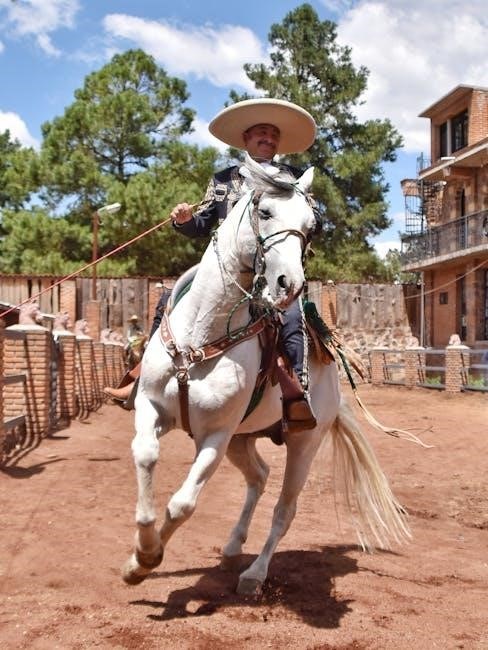
Arena Size Considerations
Factors to Consider
When determining the ideal size for a riding arena‚ several factors must be considered‚ including the type of riding discipline‚ the number of horses‚ and the available space․ The arena size will also depend on the purpose of the arena‚ whether it is for training‚ competition‚ or recreational use; Additionally‚ the budget and resources available for construction and maintenance should be taken into account․ Other factors such as drainage‚ fencing‚ and lighting should also be considered to ensure a safe and functional riding arena․ By carefully considering these factors‚ equestrians can create an ideal riding arena that meets their needs and provides a safe and enjoyable riding experience․ With careful planning‚ a well-designed arena can be a valuable investment for any equestrian facility․ Proper consideration of these factors is essential for a successful arena․
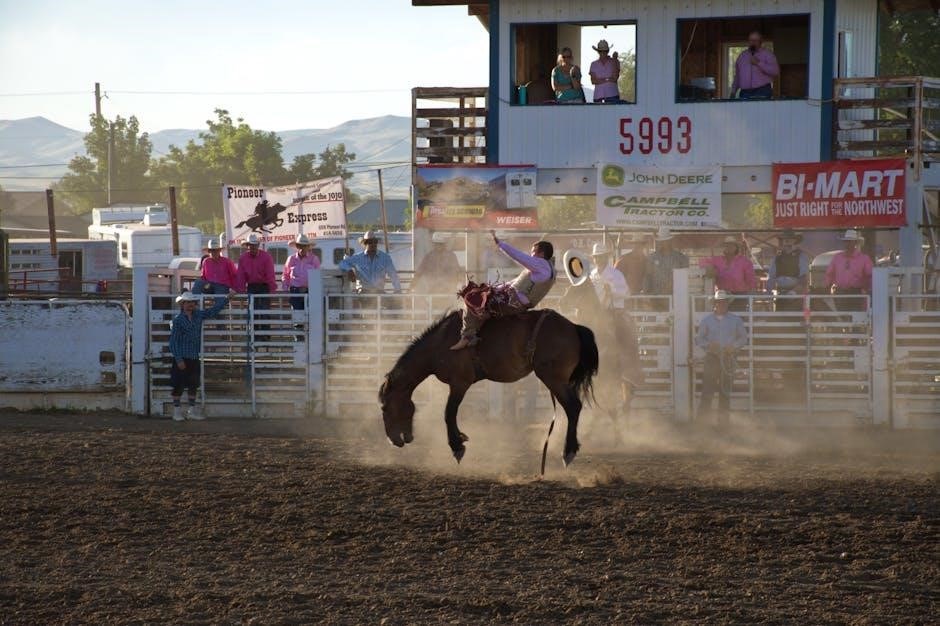
Common Arena Dimensions
Arena dimensions vary including small standard and large sizes always used online now effectively․
Small‚ Standard‚ and Large Arenas
Small‚ standard‚ and large arenas are common terms used to describe riding arena sizes․
The size of the arena will depend on the intended use and discipline‚ with smaller arenas suitable for casual riding and larger arenas for competitive events․
A small arena is typically around 60 ft x 120 ft‚ while a standard arena is around 20 x 40m and a large arena is around 20 x 60m․
These sizes can vary depending on the specific needs and requirements of the riders and the type of riding being done․
Understanding the different sizes and their uses is essential for designing and building an effective riding arena․
With the right size and design‚ a riding arena can provide a safe and enjoyable space for riders to practice and compete․
Arena size is an important consideration for equestrian facilities․
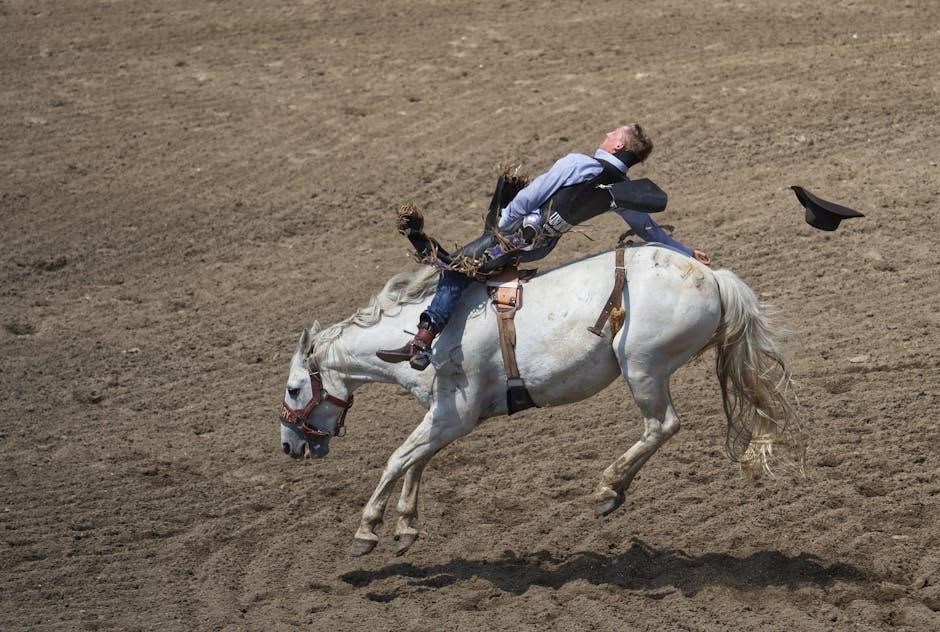
Construction and Building Essentials
Construction and building essentials involve careful planning and investment for riding arena projects always requiring professional expertise online now effectively․
Investment and Planning
Investment and planning are crucial aspects of building a riding arena‚ requiring careful consideration of factors such as budget‚ land availability‚ and intended use․
A well-planned arena can provide a safe and functional space for horse riding‚ while also enhancing the overall aesthetic of the surrounding area․
Effective planning involves assessing the needs of the riders‚ horses‚ and trainers‚ as well as ensuring compliance with local regulations and safety standards․
By investing time and resources into the planning phase‚ individuals can create a riding arena that meets their specific needs and provides a valuable asset for years to come‚ with a focus on quality and durability always being essential․
This involves working with experienced professionals to design and construct the arena‚ taking into account factors such as drainage‚ fencing‚ and surfacing‚ to create a functional and safe space․
Ultimate Guide to Arena Sizing
Expert advice and recommendations for optimal arena sizing are provided online always now effectively․
Expert Advice and Recommendations
Expert advice is crucial when determining the ideal riding arena size‚ with considerations including the type of riding discipline and the number of horses․
A well-designed arena can improve horse safety and performance‚ and experts recommend consulting with experienced equestrians and arena designers․
Online resources and guides provide valuable information on arena sizing‚ construction‚ and maintenance‚ helping individuals make informed decisions․
Regular arena maintenance is also essential to ensure the arena remains safe and functional‚ with experts recommending regular inspections and repairs․
By following expert advice and recommendations‚ individuals can create a high-quality riding arena that meets their specific needs and provides a safe and enjoyable riding experience․
Arena size and design should be carefully planned to accommodate the intended use and discipline‚ with experts providing guidance on optimal arena dimensions and construction materials․
Leave a Reply
You must be logged in to post a comment.